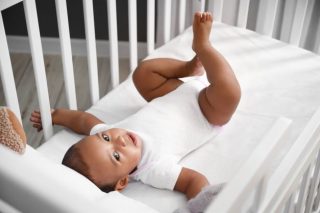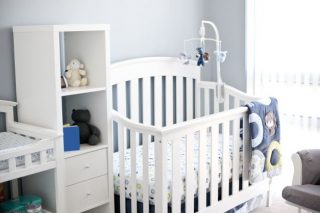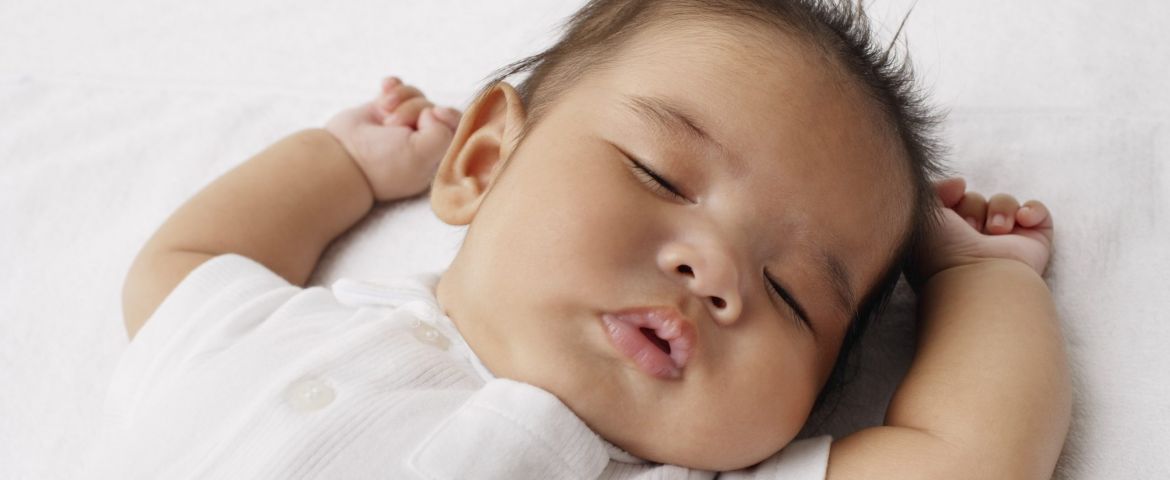By: Shannon Wilson, MPH, VP of population health and health equity
There are about 3,400 sleep-related deaths among babies in the US each year. Although it is hard to tell the exact causes of SIDS, there are simple steps parents and caregivers can take to create a safe sleep environment for their babies and reduce the risk of SIDS and other sleep-related causes of death.
1. Sleep sack only sleeping
Remove toys, blankets, pillows, bumper pads and other accessories from the crib. As a parent or caregiver, you might want to place your baby on a soft surface to help them be comfortable while sleeping. However, soft surfaces can increase the risk of sleep-related deaths. A Pediatrics report found that accidental infant suffocation deaths during sleep were most frequently caused by soft bedding. It may be tempting to bundle your baby up to keep them warm, but blankets or comforters can also cause overheating. If you are worried about your baby getting cold at night, dress them in a sleep sack as a safer alternative to blankets.
2. Share your bedroom, not your bed
Place the crib or bassinet in your bedroom instead of bed sharing.  Suffocation or other injuries can occur when a baby is co-sleeping in a bed with an adult or other children. Instead, placing the crib next to your bed so that your baby is within reach is a safer way to feed, comfort, and monitor them throughout the night. The CDC recommends keeping your baby’s sleep area in the same room where you sleep until they are at least six months old.
Suffocation or other injuries can occur when a baby is co-sleeping in a bed with an adult or other children. Instead, placing the crib next to your bed so that your baby is within reach is a safer way to feed, comfort, and monitor them throughout the night. The CDC recommends keeping your baby’s sleep area in the same room where you sleep until they are at least six months old.
3. Best sleeping position for babies
Babies should always be placed on their backs to sleep during naps and at bedtime. Stomach or side sleeping is a risk factor for SIDS. Even if your baby spits up, their anatomy and gag reflex prevent them from choking while on their back.
4. Know Crib safety
Safe sleep practices for babies includes crib safety. Follow all of the manufacturer’s instructions to assemble your crib. The distance between slats in the crib should be no more than 6 centimeters to prevent your baby from falling out or trapping their head or limbs. Cribs should not have a drop-side rail, which, if lowered, can cause your baby to fall out. Get a mattress that fits tightly in the crib so your baby does not slip between the sides. Make sure to also complete and submit the product registration card to learn about any recalls or safety updates. You can also easily check for recalls by typing “crib” and the brand name in an online search.
Get a mattress that fits tightly in the crib so your baby does not slip between the sides. Make sure to also complete and submit the product registration card to learn about any recalls or safety updates. You can also easily check for recalls by typing “crib” and the brand name in an online search.
If you are getting a used crib, ensure that it is less than 10 years old. Double check that it has all the proper hardware installed and is overall in good condition.
5. Consult healthcare providers
If you have questions about basic safe sleep practices, check with your healthcare provider. They should be able to share recommendations on how to reduce the risk of SIDS. The Maternal Infant Health Program (MIHP) is also free for Medicaid members and supports moms and babies before, during and after pregnancy. The MIHP provides in-home visits with a team of health professionals who can advise on safe sleep practices, along with offering other maternal infant health services.
Babies are at risk of SIDS until they are about one year old. It is important to understand the risks and how to create a space that is safe for your baby to sleep, grow, and thrive.
About the Author: Shannon Wilson, MPH, is the vice president of population health and health equity for Priority Health, a Michigan-based health plan. In her role, she is responsible for the growth and development of Priority Health’s population health strategy, inclusive of health plan quality. Wilson also has oversight for health equity efforts, ensuring that achieving health equity is foundational to all health plan functions. To complement this work, Wilson serves as the executive director of the Priority Health Total Health Foundation, a charitable organization committed to addressing social needs and determinants in southeast Michigan.


